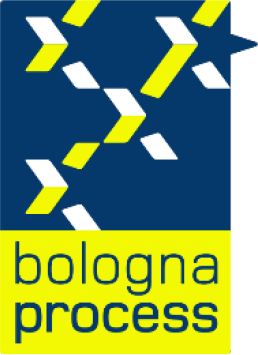Islamic Economics and Finance
Course Details

KTO KARATAY UNIVERSITY
İktisadi, İdari ve Sosyal Bilimler Fakültesi
Programme of Islamic Economics and Finance
Course Details
İktisadi, İdari ve Sosyal Bilimler Fakültesi
Programme of Islamic Economics and Finance
Course Details

| Course Code | Course Name | Year | Period | Semester | T+A+L | Credit | ECTS |
|---|---|---|---|---|---|---|---|
| 99700017 | Participation Finance Products and Applications | 4 | Spring | 8 | 3+0+0 | 6 | 6 |
| Course Type | Compulsory |
| Course Cycle | Bachelor's (First Cycle) (TQF-HE: Level 6 / QF-EHEA: Level 2 / EQF-LLL: Level 6) |
| Course Language | Turkish |
| Methods and Techniques | - |
| Mode of Delivery | Face to Face |
| Prerequisites | - |
| Coordinator | - |
| Instructor(s) | Asst. Prof. Selahattin BEKTAŞ |
| Instructor Assistant(s) | - |
Course Instructor(s)
| Name and Surname | Room | E-Mail Address | Internal | Meeting Hours |
|---|---|---|---|---|
| Asst. Prof. Selahattin BEKTAŞ | C-Z10 | [email protected] | 7339 |
Course Content
This course aims to teach the fundamental principles of numerical methods used to solve problems encountered in fields such as engineering and economics. Topics covered include numerical analysis, linear algebra, numerical solutions of differential equations, optimization techniques, and matrix methods. The course will also focus on the application of numerical methods using programming languages such as Python and MATLAB, with an emphasis on data modeling and analysis techniques. Students will gain practical skills in applying numerical methods to solve various engineering and scientific problems.
Objectives of the Course
Students will be able to use advanced mathematical and statistical techniques to solve problems related to different functions such as production, marketing, finance, accounting, human resources, planning and stock management that they will encounter in the business world.
They can model, solve, and interpret the solution to help businesses make decisions. For this purpose, using computers and especially spreadsheet programs
Modeling the problems and finding solutions will be essential.
They can model, solve, and interpret the solution to help businesses make decisions. For this purpose, using computers and especially spreadsheet programs
Modeling the problems and finding solutions will be essential.
Contribution of the Course to Field Teaching
| Basic Vocational Courses | |
| Specialization / Field Courses | |
| Support Courses | X |
| Transferable Skills Courses | |
| Humanities, Communication and Management Skills Courses |
Relationships between Course Learning Outcomes and Program Outcomes
| Relationship Levels | ||||
| Lowest | Low | Medium | High | Highest |
| 1 | 2 | 3 | 4 | 5 |
| # | Program Learning Outcomes | Level |
|---|---|---|
| P1 | İslam İktisadı ve Finans alanında kuramsal ve uygulamalı bilgilere sahip olma, sahip olduğu bilgileri kullanabilme | 4 |
| P2 | İslam İktisadı ve Finans alanında edindiği bilgi, beceri ve yetkinlikleri kullanarak meseleleri tanımlama, veri toplama, değerlendirme, analiz etme, yorumlama ve çözüm önerisi geliştirebilme | 5 |
| P3 | İslam İktisadı ve Finans alanıyla ilgili farklı bilgi kaynaklarına erişip sayısal analiz ve araştırma yapabilme | 4 |
| P4 | Disiplin içi, çok disiplinli veya çok kültürlü gruplarda ve bireysel çalışabilme | 3 |
| P5 | Ahlaki değerler ve mesleki sorumluluk bilinci ile hareket edebilme | 2 |
| P6 | Alan uygulamalarının, evrensel ve toplumsal etkileri ile hukuki sonuçlarını bilme | 2 |
| P7 | Öğrenim dilinde yazılı ve sözlü iletişim kurabilme, en az bir yabancı dil bilgisine sahip olabilme | 3 |
Course Learning Outcomes
| Upon the successful completion of this course, students will be able to: | |||
|---|---|---|---|
| No | Learning Outcomes | Outcome Relationship | Measurement Method ** |
| O1 | Conducts independent research on Islamic economics and finance topics. | P.3.3 | 1 |
| O2 | Critically evaluates the results of numerical analyses. | P.3.5 | 1 |
| ** Written Exam: 1, Oral Exam: 2, Homework: 3, Lab./Exam: 4, Seminar/Presentation: 5, Term Paper: 6, Application: 7 | |||
Weekly Detailed Course Contents
| Week | Topics |
|---|---|
| 1 | Introduction and Modeling |
| 2 | Linear Programming and Modeling Logic |
| 3 | Network models |
| 4 | Goal Programming |
| 5 | Integer Programming |
| 6 | Nonlinear Programming |
| 7 | Dynamic Programming |
| 8 | Application with Different Business Problems |
| 9 | Deterministic Stock Models |
| 10 | Possibility |
| 11 | Forecast Models |
| 12 | Game Theory |
| 13 | Simulation |
| 14 | Markov Chains |
Evaluation Method and Passing Criteria
| In-Term Studies | Quantity | Percentage |
|---|---|---|
| Attendance | - | - |
| Course Specific Internship (If Any) | - | - |
| Homework | - | - |
| Presentation | - | - |
| Projects | - | - |
| Midterms | 1 | 40 (%) |
| Final Exam | 1 | 60 (%) |
| Total | 100 (%) | |
ECTS / Working Load Table
| Quantity | Duration | Total Work Load | |
|---|---|---|---|
| Course Week Number and Time | 14 | 3 | 42 |
| Out-of-Class Study Time (Pre-study, Library, Reinforcement) | 14 | 2 | 28 |
| Midterms | 1 | 10 | 10 |
| Quiz | 0 | 0 | 0 |
| Homework | 0 | 0 | 0 |
| Practice | 0 | 0 | 0 |
| Laboratory | 0 | 0 | 0 |
| Project | 0 | 0 | 0 |
| Workshop | 0 | 0 | 0 |
| Presentation/Seminar Preparation | 0 | 0 | 0 |
| Fieldwork | 0 | 0 | 0 |
| Final Exam | 1 | 10 | 10 |
| Other | 0 | 0 | 0 |
| Total Work Load: | 90 | ||
| Total Work Load / 30 | 3 | ||
| Course ECTS Credits: | 3 | ||
Course - Learning Outcomes Matrix
| Relationship Levels | ||||
| Lowest | Low | Medium | High | Highest |
| 1 | 2 | 3 | 4 | 5 |
| # | Learning Outcomes | P3 |
|---|---|---|
| O1 | Conducts independent research on Islamic economics and finance topics. | 4 |
| O2 | Critically evaluates the results of numerical analyses. | 5 |
